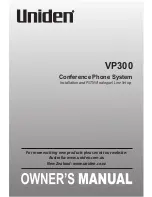
208
•
Avoid dropping the cell phone. Dropping it, especially on a hard
surface, can potentially cause damage to the phone and
battery. If you suspect damage to the phone or battery, take it
to a service center for inspection.
•
Never use any charger or battery that is damaged in any way.
•
Use the battery only for its intended purpose.
•
If you use the phone near the network's base station, it uses
less power; talk and standby time are greatly affected by the
signal strength on the cellular network and the parameters set
by the network operator.
•
Follow battery usage, storage and charging guidelines found in
the user’s guide.
•
Battery charging time depends on the remaining battery charge
and the type of battery and charger used. The battery can be
charged and discharged hundreds of times, but it will gradually
wear out. When the operation time (talk time and standby time)
is noticeably shorter than normal, it is time to buy a new
battery.
•
If left unused, a fully charged battery will discharge itself over
time.
•
Use only Samsung-approved batteries and recharge your
battery only with Samsung-approved chargers. When a charger
is not in use, disconnect it from the power source. Do not leave
the battery connected to a charger for more than a week, since
overcharging may shorten its life.
•
Do not use incompatible cell phone batteries and chargers.
Some Web sites and second-hand dealers, not associated with
reputable manufacturers and carriers, might be selling
incompatible or even counterfeit batteries and chargers.
Consumers should purchase manufacturer or carrier
recommended products and accessories. If unsure about
whether a replacement battery or charger is compatible,
contact the manufacturer of the battery or charger.
•
Extreme temperatures will affect the charging capacity of your
battery: it may require cooling or warming first.
Summary of Contents for BlackJack
Page 16: ...16 ...
Page 46: ...46 ...
Page 56: ...56 ...
Page 98: ...98 ...
Page 104: ...104 ...
Page 122: ...122 ...
Page 130: ...130 ...
Page 140: ...140 ...
Page 144: ...144 ...
Page 164: ...164 ...
Page 180: ...Section 15 Troubleshooting 180 ...
Page 181: ...Section 15 Troubleshooting 181 ...
Page 182: ...Section 15 Troubleshooting 182 ...
Page 183: ...Section 15 Troubleshooting 183 Program Problems ...
Page 184: ...184 ...
Page 212: ...212 ...














































